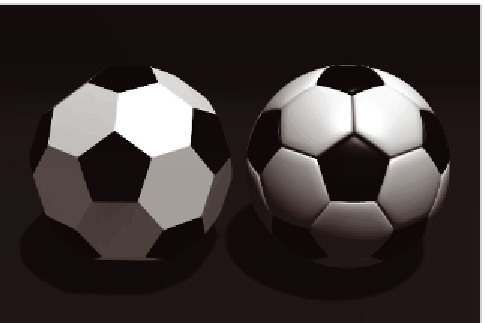Global Positioning System Reference
In-Depth Information
FIGURE 4.11.
A truncated icosahedron, constructed from 32 polygons, and a soccer
ball.
Adapted from a Wikipedia image.
polyhedral-projection maps are called, is shown in figure 4.12 for the case
of a dodecahedron.
12
The figure also shows some of the problems of this type of map. The map
shape is odd, and land surfaces can be cut up such that many adjacent
geographical features are placed on polygons that are not adjacent. Also,
look at the parallels and meridians: they are curved, the lines are discon-
tinuous at the polygon boundaries, and parallels are not always perpen-
dicular to meridians. Another problem is that direction is unclear: which
way is north? The Dymaxion maps (also known as
Fuller
projections) are
regarded as something of a novelty, not to be taken too seriously, despite
their low distortion.
The Menagerie: Other Types of Projections
There are many di√erent types of projections; I have discussed just a few
above. Some projections lead to maps with one or another very desirable
property that applies across the entire map, though there are few of these.
12. The idea of Dymaxion maps was invented by the American architect Buckminster
Fuller and patented by him in 1946. It is natural to use a gnomonic-type of projection for
this map, in which the point of projection is the center of the sphere, but Fuller in fact
preferred a slightly di√erent form of projection, in which the polyhedron is shrink-wrapped
onto the sphere. Fuller reserved the name Dymaxion for the case of an icosahedron, but
here I use it to describe any polyhedral projection. For a nontechnical account of Fuller's
Dymaxion map, see Edmondson (2007).

